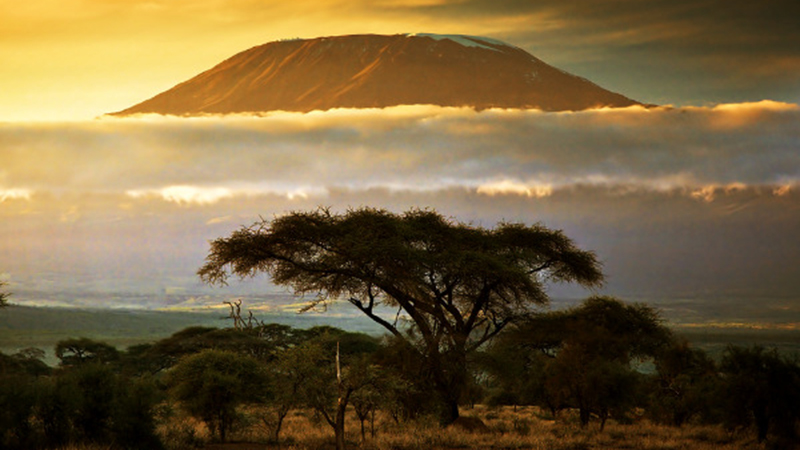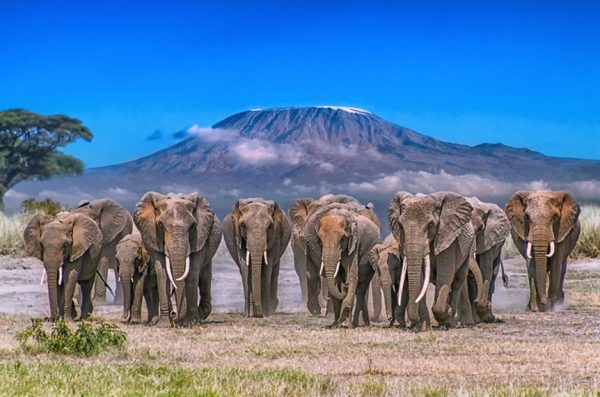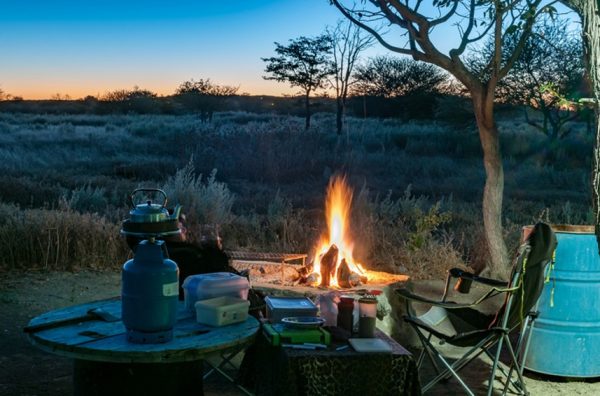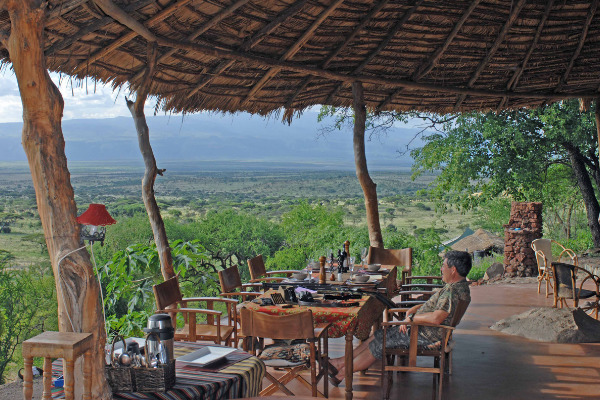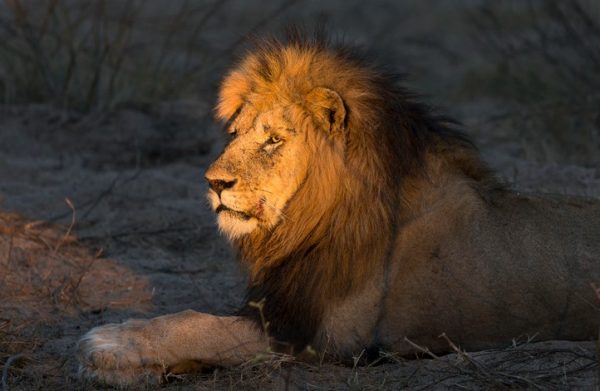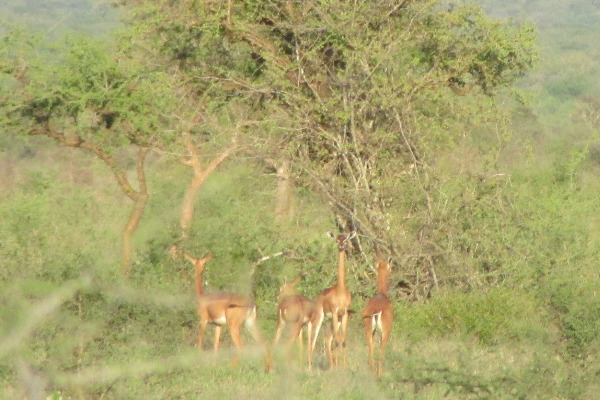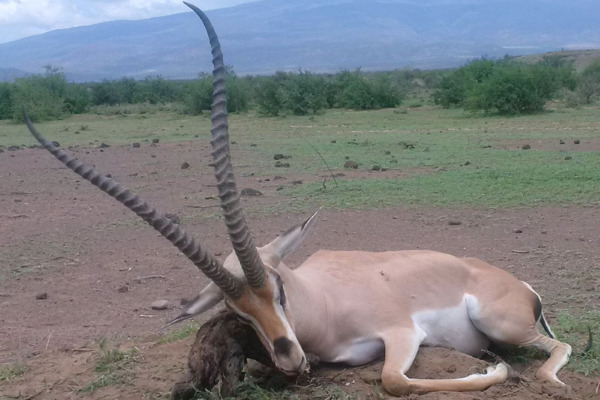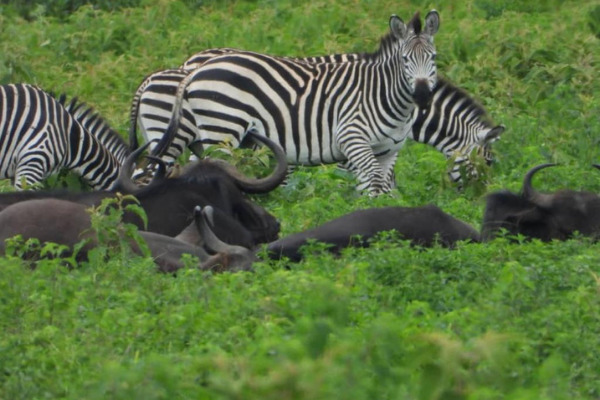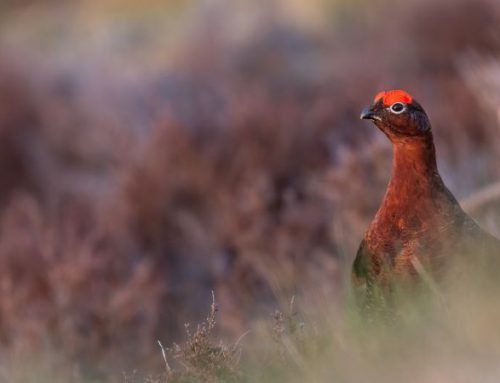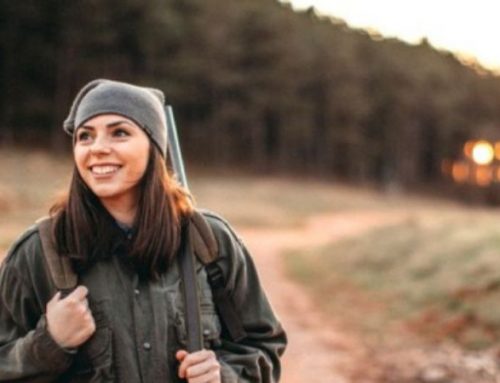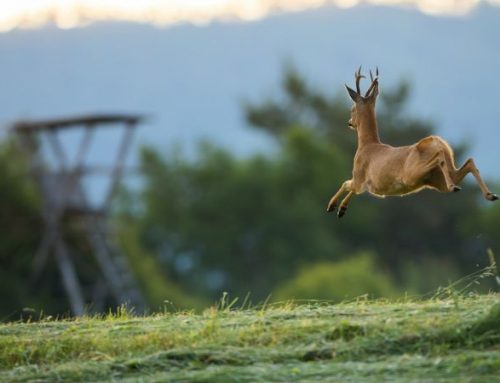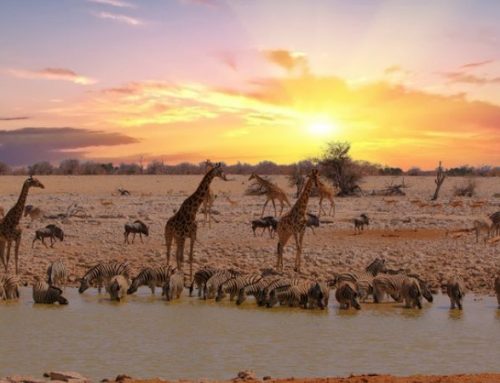To step into Tanzania is to step into a land where the spirit of adventure dances with the essence of wild Africa.
Here, amidst vast savannas, ancient forests, and untamed rivers, the hunter finds not just game but the echoes of a bygone era when legends were born under the same sun that warms these lands today. Tanzania offers more than just hunting; it promises an odyssey into the soul of Africa.
A Symphony of Landscapes
Tanzania’s landscapes are as varied as the emotions they evoke. From the dense, mysterious miombo forests of the Selous Game Reserve to the sprawling Moyowosi marshes near the borders of Rwanda and Burundi, each terrain tells its own story. These marshlands, veiled in early morning mist, cradle secretive wildlife and challenge even the most seasoned hunters.
In the heart of the country, the great rivers like the Rufiji and Rungwa carve pathways through lush ecosystems, their waters reflecting the golden hues of African sunsets. The mountainous regions near Kilimanjaro and Mount Kitumbeine offer an entirely different thrill, with their steep terrains and elusive, aggressive mountain buffaloes that test a hunter’s resolve and skill. Here, every step is an ascent into adventure, every shadow a potential encounter.
The Call of the Wild: Hunting in Tanzania
Tanzania is a dreamscape for hunters, boasting a rich tapestry of game species and diverse habitats. It is a land where the hunter’s patience and prowess are rewarded with trophies that tell tales of both challenge and triumph. Among the most sought-after species are the Cape buffalo, revered for their power and cunning, often referred to as “black death” for their reputation among hunters. In the mountainous regions, the “mountain” buffaloes are known to be particularly aggressive, their sharp instincts honed by the rugged terrains they call home.
The greater kudu, with its majestic spiraling horns, and the agile eland, Africa’s largest antelope, roam the grasslands. The elusive leopard lurks in the shadows, its presence a reminder of the raw, untamed beauty of this wilderness. And then there are the elephants and lions, kings of their domains, whose very sight quickens the pulse of those fortunate enough to encounter them.
Hunting in Tanzania is steeped in tradition, conducted under strict regulations to ensure conservation and sustainability. The thrill lies not just in the chase but in the profound respect for the land and its creatures, a connection that transcends generations.
The Legends of Yesteryears
Tanzania’s hunting heritage is inseparable from the tales of legendary hunters who once roamed its wilds. Figures like Frederick Courtenay Selous, the renowned big game hunter and naturalist, left indelible marks on these lands. Selous, whose name graces the Selous Game Reserve, chronicled his adventures in the late 19th century, describing encounters with elephants, lions, and the fierce buffaloes of the miombo woodlands. His reverence for the wilderness and dedication to conservation set a precedent for ethical hunting that continues to this day.
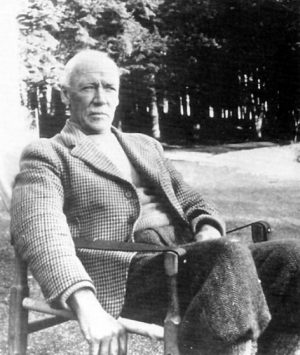
These hunters, alongside many others, painted a romantic yet rugged picture of Tanzania’s wilderness, a narrative that inspires modern-day adventurers to walk in their footsteps.
Immersing in the Tanzanian Experience
Every hunt in Tanzania is an immersion into a world where nature reigns supreme. As the first rays of dawn stretch across the horizon, the air is alive with the sounds of awakening wildlife—the distant roar of a lion, the call of exotic birds, the rustle of leaves as unseen creatures move through the underbrush. The hunter becomes a part of this symphony, blending into the environment, moving with caution and purpose.
The preparation for the hunt is a ritual in itself. From the meticulous selection of gear to the careful study of the terrain, every detail matters. Skilled trackers, often local experts with an unparalleled understanding of the land, guide the way. Their knowledge of animal behavior and uncanny ability to read subtle signs—broken twigs, faint tracks—are invaluable.
And then comes the moment of the hunt. It is a dance of patience and precision, a test of skill and instinct. Whether stalking a kudu through the tall grass or waiting for a buffalo to emerge from the shadows, every encounter is charged with anticipation and respect.
A Trophy of Memories
The trophies brought back from Tanzania are more than physical mementos; they are stories, etched in time. Each mount or photograph is a reminder of the landscapes traversed, the challenges faced, and the profound connection forged with the wild. Yet, the true trophy lies in the memories—the thrill of the hunt, the camaraderie around the campfire, the unparalleled beauty of Tanzania’s wilderness.
Tanzania: A Legacy of Adventure
To hunt in Tanzania is to join a legacy that spans centuries, a tradition that honors the wild and celebrates the indomitable spirit of exploration. It is a place where the modern hunter can connect with the legends of the past, relive their adventures, and create stories of their own.
For those who answer the call of Tanzania, the journey is not just about the hunt; it is about becoming a part of something greater. It is about standing beneath the vast African sky, feeling the pulse of the land, and knowing that you are living a story that will be told for generations to come.
The Majestic Masai Plains of Northern Tanzania: A Hunter’s Paradise
The northern Masai plains, sprawling across the heart of East Africa, are a realm of vast savannahs, dotted with acacia trees and dramatic rocky outcrops. These plains, steeped in cultural significance and teeming with biodiversity, are home to some of the most coveted game species in the hunting world. A destination of dreams for safarists, this region offers not only challenging hunts but also an opportunity to immerse oneself in the breathtaking landscapes and timeless traditions of the Masai people.
The Masai plains are an iconic hunting destination, combining rich biodiversity with unique terrain that challenges even the most experienced hunters. From the swift gazelle darting across the open grasslands to the imposing Cape buffalo lurking near waterholes, the diversity of game and the intricate strategies required to hunt them make this region a haven for enthusiasts.
The Wildlife of the Masai Plains: Treasures of the Savannah
Antelopes: Gems of the Grasslands
The Masai plains are home to a wide variety of antelopes, including the elegant impala, fleet-footed gazelles, and the resilient hartebeests. Among these, the Lesser Kudu and the Gerenuk stand out as true jewels of the savannah.
Lesser Kudu: Shy and elusive, this striking antelope is marked by its spiraling horns and vibrant stripes. Found in dense bushy areas, hunting the Lesser Kudu requires patience and skill, often demanding silent stalking through thorny thickets.
Gerenuk (Giraffe Antelope): Known for its long neck and ability to stand on its hind legs to reach high foliage, the Gerenuk is a fascinating target. Found in arid areas with sparse vegetation, spotting this species requires sharp eyes and a deep understanding of their habits.
Wildebeests and Zebras: The Icons of the Plains
Wildebeests: These robust herbivores, famous for their annual migrations, are abundant in the Masai plains. Hunting them offers a thrilling challenge, especially during their migration, when they traverse vast distances in search of greener pastures.
Zebras: With their iconic black-and-white stripes, zebras roam the savannah in large herds. While not the primary focus of many hunters, they present a unique trophy and a demanding quarry due to their keen senses and group dynamics.
Cape Buffalo: The Black Death
Arguably the most challenging game in the Masai plains, the Cape buffalo is revered for its size, strength, and unpredictability. Known as the “black death,” these animals are highly aggressive when threatened, making them one of the most prestigious trophies.
Other Iconic Species of the Masai Plains
The Masai plains are also home to formidable predators like leopards, cheetahs, and the legendary black-maned lions. Hunting these apex predators requires a combination of strategy, stealth, and precision, often involving hours of tracking and observing their movements.
Leopards: These elusive cats are masters of camouflage, often found lounging in trees or stalking prey at dusk. Successful leopard hunting requires baiting and immense patience.
Black-Maned Lions: These regal creatures, known for their dark, flowing manes, are a symbol of the African wilderness. Encountering a lion on the hunt is an experience that combines awe and adrenaline.
Warthogs
These stout, tusked pigs are ubiquitous across the plains and provide an engaging hunt. Known for their keen senses and quick bursts of speed, warthogs are often found near waterholes and grasslands.
Hunting in Tanzania: Techniques and Strategies
- Spot-and-Stalk Hunting: This is one of the most popular methods in the Masai plains, especially for species like impalas, gazelles, and zebras. Hunters use binoculars to scan the open terrain and then carefully approach their target, often using natural cover such as bushes and rocks.
- Blind Hunting: For species like Cape buffalo and lions, hunting from blinds near waterholes or feeding areas is an effective method. This approach requires hours of silent observation but offers a chance to study the animal’s behavior and ensure a precise shot.
- Tracking: Tracking is an essential skill, particularly for elusive species like Lesser Kudus and leopards. Expert trackers, often Masai guides with an intimate knowledge of the terrain, follow subtle signs such as footprints, broken twigs, and scat to locate the game.
Recommended Equipment: Rifles, Calibers, and Gear
Choosing the right firearm is crucial for a successful and ethical hunt.
- For antelopes like impalas and gazelles, a .270 Winchester or .30-06 Springfield is ideal, providing the accuracy and power needed for clean kills.
- For Cape buffalo and larger game, a .375 H&H Magnum or .416 Rigby is recommended, offering the stopping power necessary to handle such formidable animals.
- redators like leopards and lions require precise, high-impact calibers such as the .300 Winchester Magnum.
Apparel for the Seasons
Tanzania’s climate varies depending on the region and season, so appropriate clothing is essential.
- Dry Season (June to October): Lightweight, breathable fabrics in neutral colors like khaki or olive are ideal for staying cool and blending into the environment. A wide-brimmed hat and sunglasses are essential for sun protection.
- Wet Season (November to May): Waterproof jackets and sturdy boots are crucial for navigating muddy terrains. Layering is important to adapt to sudden changes in temperature.
Binoculars with a wide field of view for spotting game in open savannahs and a comfortable daypack for carrying water, snacks, and hunting gear. Insect repellent and sunscreen to protect against the elements.
Luca Bogarelli’s hunting trip to Tanzania.
Luca remembers well his last hunting trip in Tanzania and all the emotions it gave him. Read his story!
“The humid night of Dar es Salaam welcomes me in an embrace that has been suspended for a decade. I feel the smell of Africa, of my Africa, the one made of transparent air, the cerulean ocean and thorny savannahs, the ones of the boundless Masai steppes.
Soft are the nine hours on the off-road vehicles to reach the Kitwai camp, a small village shared by Masai and Ndorobo. I drink the views that I had not seen for too long, the shacks outskirts, the markets overflowing with fruit: mangoes not completely ripe, very sweet papayas, jack fruit and pineapples perfect in shape and flavor.
Groups of huts follow one another, the hills flatten and suddenly, behind a curve, the plains: endless gray carpets dotted with embroidery of thorny acacias. The smell of wood smoke assails me and, in its evocative embrace, takes me back in time when this continent was for me passion, obsession and reason for life.
Now, mature hunter, man of travels and of winning and losing bets, I meet Africa again in a more sober, more reasoned way. It has certainly become part of me, but I live it with that tender detachment with which you accompany a child to his own life; I caress her, holding her with a dormant love, without passion, as when you meet an old flame.
I decompress and my heart regains a regular beat as I try to leave fatigue and pain behind: thoughts fly lighter bouncing from star to star in the deep black of the African night.
The rocky massif that heads the camp seems to push the moon upwards, almost full, bright like a lighthouse, milky like a ribbon of foam on the sea …
In the darkness of the tent, lulled by the sounds of the night and the murmur of time, I reflect on life, on my beautiful life, blessed with joys, experiences and full of love. Carefree and profound, poised between challenges and fortunes, disappointments and victories, but “life”, intense and also lived in the fullness of a passion that becomes a path between “sense and sensibility” …
I await the silence of the deep night and the solitude it brings, to be able to fill it with thoughts and projects. Solitude: point of departure and arrival at the same time. “
Are you ready to the Tanzania’s wilderness?

